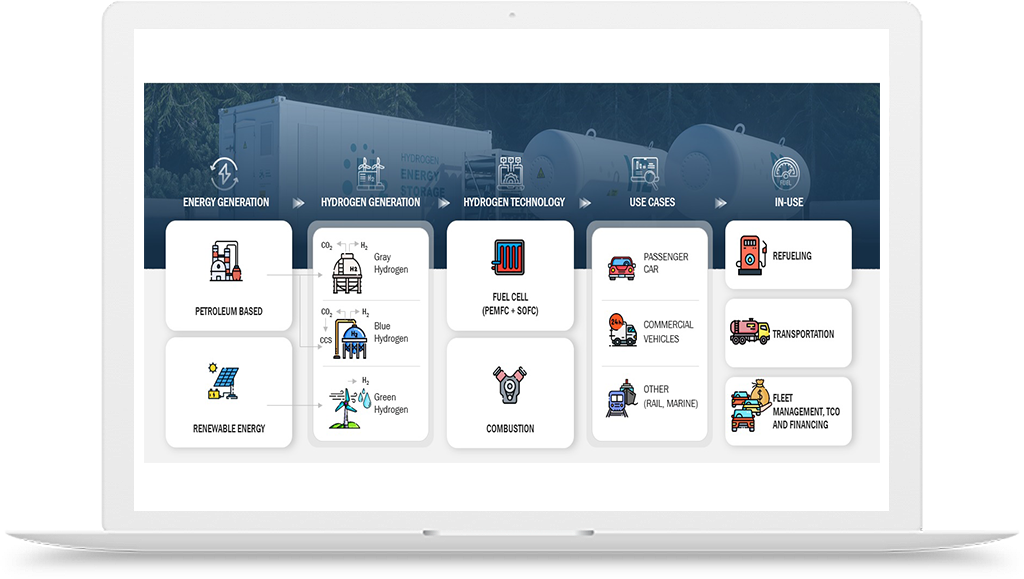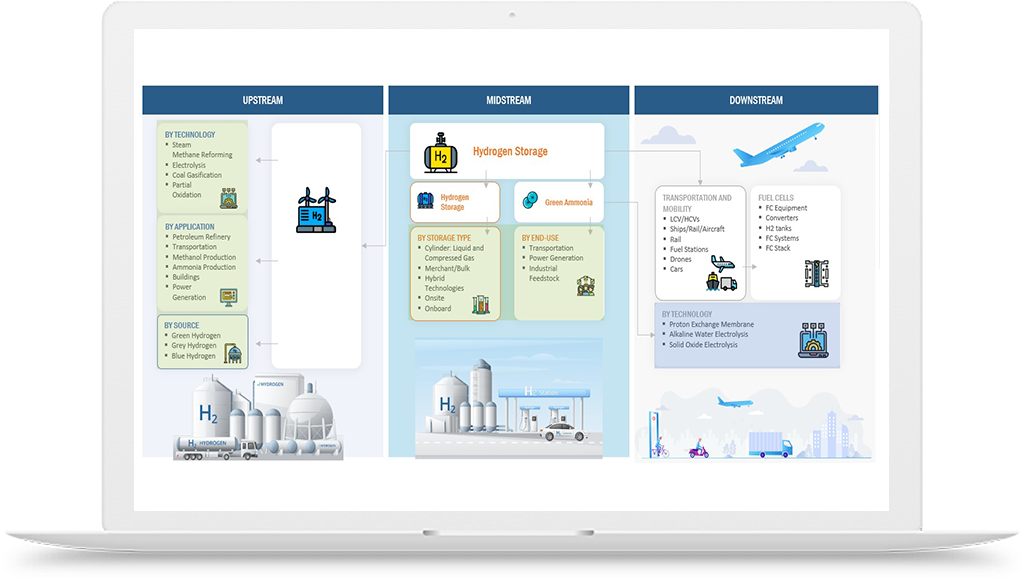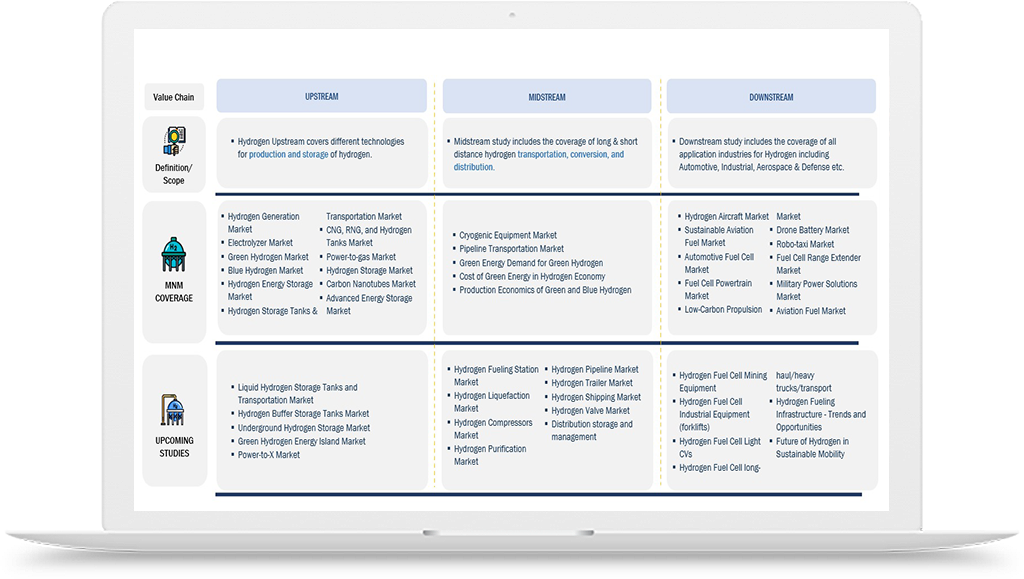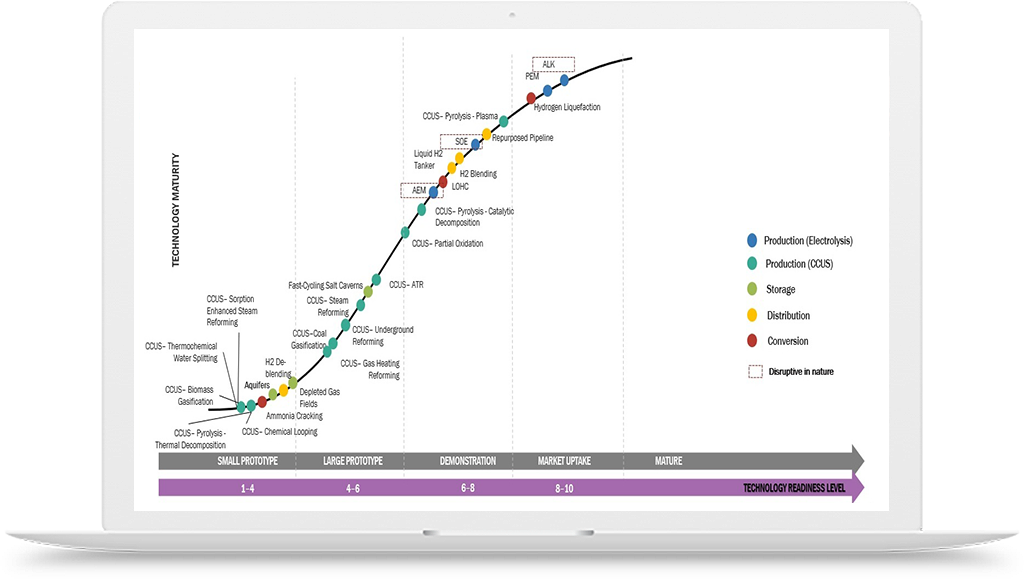Hydrogen Production Cost Analysis
TOP 10 HYDROGEN PRODUCTION COST OPTIMIZATION TECHNIQUES
Hydrogen production cost analysis is crucial for understanding the economic viability of hydrogen as an energy source. But do you know what are those Cost Optimization techniques, how to identify, which phase to implement?
Explore the top 10 Hydrogen Production Cost Optimization Techniques!
- How can renewable energy integration be leveraged to optimize hydrogen production costs?
- What advancements in coal gasification technologies can contribute to cost optimization in hydrogen production?
- What are the potential cost-saving benefits of technological innovation in hydrogen production processes?
- Deep dive analysis on various cost optimisation techniques for Steam Methane Reforming (SMR)
- How can the utilization of carbon capture and utilization (CCU) technologies in SMR reduce greenhouse gas emissions and potentially generate additional revenue streams?
- What strategies can be implemented to optimize the cost efficiency of electrolysis for hydrogen production?
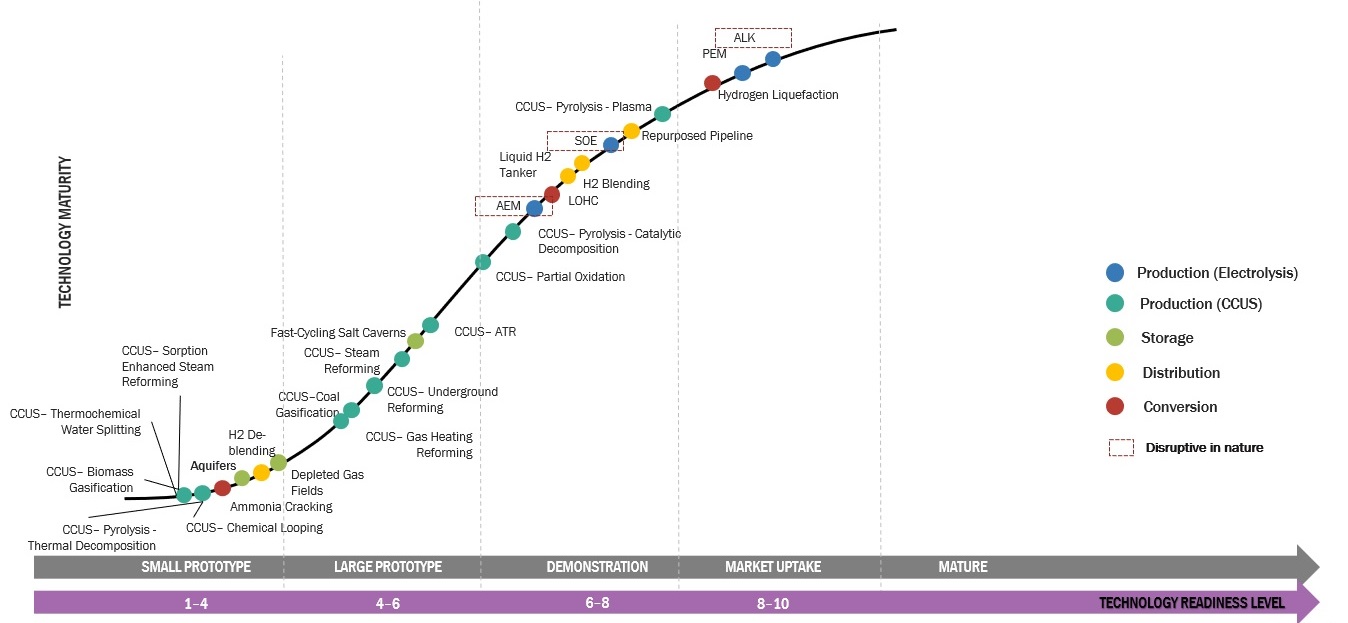
Read More..
Green Hydrogen Production: The utilization of renewable energy in the electrolysis process ensures that the entire hydrogen production chain contributes to the global efforts to combat climate change. Green hydrogen production contributes to energy independence by leveraging locally available renewable resources. Several countries are taking bold steps to promote green hydrogen production. Green hydrogen production stands at the forefront of the renewable energy revolution, offering a clean and sustainable alternative to traditional hydrogen production methods.
Green Hydrogen Production Process: The environmentally friendly green hydrogen production process is changing the face of energy. Electrolysis is a sustainable energy process that breaks down water into hydrogen and oxygen using solar or wind power. This carbon-neutral technique runs the chemical process through electrolyzers that are powered by electricity. green hydrogen production process produces no greenhouse gases; conventional hydrogen production is dependent on fossil fuels. The move to a low-carbon future is aided by electrolysis, which makes energy carriers cleaner and more environmentally friendly. green hydrogen production process is a shining example of how to meet the growing demand for clean energy while providing a scalable and environmentally responsible means of powering homes, businesses, and transportation without adding to global warming.
An essential component in assessing the sustainability and profitability of hydrogen as a clean energy source is the analysis of the cost of hydrogen production. To propel developments in this area, a thorough assessment of the cost of producing hydrogen must be carried out.
The three primary methods of producing hydrogen are electrolysis, and coal gasification.
- Electrolysis: Water is separated into hydrogen and oxygen with the use of electricity. The cost of producing hydrogen using electrolysis is dependent on the type of equipment used and power costs.
- Coal Gasification: The process of coal gasification involves the reaction of coal with oxygen and steam, leading to the production of hydrogen and carbon monoxide. Further reaction between the carbon monoxide and steam can provide more hydrogen and carbon dioxide.
Significance of Hydrogen Production Cost Analysis
- Assessing Economic Viability: The economic feasibility of various production techniques can be ascertained through the use of cost analysis for hydrogen production. We can determine the most economical routes for producing hydrogen by comparing the expenses of several methods, including biomass gasification, steam methane reforming (SMR), and electrolysis.
- Identifying Cost Reduction Opportunities: Finding opportunities for cost savings can be facilitated by analyzing the manufacturing costs of hydrogen. We can identify the main cost factors and concentrate on increasing productivity, lowering the amount of materials and energy used, and fine-tuning process parameters by using thorough cost breakdowns.
- Policy Development and Investment Support: Hydrogen production cost analysis plays a vital role in informing policy development and attracting hydrogen investment. Governments and policymakers can utilize cost analysis to design effective support mechanisms, incentives, and regulations that promote the development and deployment of cost-competitive hydrogen technologies. Investors and financial institutions also rely on accurate cost assessments to evaluate the financial viability and potential return on hydrogen investment in hydrogen projects.
Key components of hydrogen production costs:
-
Capital Costs: The hydrogen investment needed to build and commission hydrogen generating plants is referred to as capital expenses. The price of the infrastructure, machinery, buildings, and land is included in this. The production technique and facility size can have a substantial impact on capital expenses.
-
Operating and Maintenance Costs: Operating and maintenance costs include all of the expenditures related to the daily operation and maintenance of the plant used to produce hydrogen. This covers labor costs, energy costs, costs associated with maintenance and repairs, and other operating costs.
Methodologies for Hydrogen Production Cost Analysis
- Techno-economic Analysis (TEA): Technical and financial aspects of a hydrogen manufacturing process are assessed in a techno-economic analysis. It takes into account the technology's initial investment costs, ongoing running expenses, and revenue sources.
- Life Cycle Cost Analysis (LCCA): Life cycle cost analysis takes into account the entire life cycle of a hydrogen production system, including the construction, operation, maintenance, and decommissioning phases.
Key Cost Factors in Hydrogen Production
When analyzing the cost of hydrogen production, several key factors need to be considered. These factors can vary depending on the specific production technology and its characteristics. Here are some key cost factors commonly associated with hydrogen production:
- Energy Costs: Hydrogen generation is heavily dependent on energy costs. Depending on the energy source itself, process efficiency, and the technology being utilized, different amounts of energy are needed. As an illustration, whereas SMR requires heat energy from natural gas, electrolysis depends on electricity.
- Operating and Maintenance Costs: The costs associated with the daily operation and maintenance of the hydrogen producing facility are covered by operating and maintenance charges.
- Efficiency and Yield: The final cost depends on how well the hydrogen manufacturing process works. Costs of manufacturing are reduced since higher efficiency produces more hydrogen per unit of input. A significant additional aspect is yield, or the quantity of hydrogen produced from the feedstock.
Challenges in the Hydrogen Production Cost
- Capital Intensity: Facilities that produce hydrogen frequently need large initial financial outlays. The establishment and commissioning of hydrogen production plants might entail substantial capital expenses, especially for novel technologies or expansive establishments.
- Feedstock Availability and Cost: The price and accessibility of feedstock materials, like as water, biomass, or natural gas, can have an impact on the cost of producing hydrogen. Cost estimates may become unpredictable due to limited supply or price swings in feedstock.
Strategies for Hydrogen Production Cost Optimization
- Technological Advancements: The advancement of hydrogen generation technology necessitates ongoing research and development. Lower costs may result from advances in system architecture, materials, catalysts, and process efficiency.
- Scale-up and Economies of Scale: Costs can be lowered by expanding hydrogen production plants since economies of scale can be achieved. Greater cost distribution, more efficiency, and greater resource usage are advantages of larger facilities.
- Enhanced Energy Efficiency: Energy input costs can be considerably decreased by making hydrogen manufacturing systems more energy efficient. Enhancing heat integration, reducing energy losses, and process design optimization should be the main goals of research and development.
Key Technologies for Hydrogen Production Cost Optimization and Comparative Analysis
- Steam Methane Reforming (SMR): SMR is currently the dominant technology for large-scale hydrogen production. It utilizes natural gas as a feedstock and steam to produce hydrogen. SMR benefits from mature technology and existing infrastructure, but its cost optimization potential is limited.
- Electrolysis: Water can be split into hydrogen and oxygen using electricity through a new method called electrolysis. It can be run on renewable energy, providing a technique to produce green hydrogen. The price of electricity, the effectiveness of the electrolyzes, and the availability of renewable energy sources are some of the variables that affect the cost of electrolysis.
- Biomass Gasification: Biomass gasification is a thermochemical process that turns biomass fuel into syngas that is rich in hydrogen. One benefit of this method is that it may be used with renewable feedstocks, including waste materials, energy crops, or agricultural wastes.
Successful Hydrogen Production Cost Optimization Examples
- Renewable Energy Integration: Cost optimization has been aided by the incorporation of renewable energy sources into the hydrogen generation process. Green hydrogen production can achieve cost parity with other methods of hydrogen synthesis by utilizing inexpensive renewable electricity as electrolysis input.
- Technological Advancements in Catalysts: Catalysts play a crucial role in many hydrogen production processes. Advances in catalyst development have led to cost optimization by improving efficiency, reducing materials costs, and extending catalyst lifetimes.
- Scale-up and Standardization: Developing standardization and expanding hydrogen manufacturing methods have helped to reduce costs. Scale economies, enhanced process efficiency, and reduced capital expenditures per hydrogen produced are advantages of larger production plants.
Future Outlook and Emerging Trends in Hydrogen Production Cost Optimization
- Improvements in Electrolysis Efficiency: Future Outlook and Emerging Trends in Hydrogen Production Cost Optimization.
- Advanced Catalyst Development: Ongoing research and development efforts in catalyst design and optimization are expected to yield better performance, stability, and reduced costs. The cost of producing hydrogen can be significantly reduced by technological advancements in catalyst materials, such as those made of non-precious metals or earth-abundant minerals.
Policy and Market Implications for Hydrogen Production
- Policy Support for Infrastructure Development: The development of infrastructure for hydrogen generation is greatly aided by policy support from governments. For the purpose of producing, storing, and transporting hydrogen, rules, standards, and licenses must be established.
- Carbon Pricing and Emission Reduction Policies: Reducing carbon emissions in the generation of hydrogen can be financially motivated by implementing carbon pricing mechanisms, such as carbon taxes or cap-and-trade schemes. Carbon price levels the playing field for various hydrogen production techniques and promotes the uptake of low-carbon solutions.
Collaborations and Further Research
Collaboration: Hydrogen production cost optimization requires cooperation between industry players, academic institutions, governments, and international organizations. Promoting information exchange, collaborative research endeavors, and technology transfer can reduce expenses and boost creativity.
Research and Development: In order to find chances for cost minimization, advance technology, and investigate novel ideas, research and development activities must be ongoing. Investments in new materials, catalysts, process enhancements, and system integration should come from research organizations, academic institutions, and commercial businesses.
Data Sharing and Analysis: To do accurate cost analysis and identify areas that need improvement, one needs access to reliable data. Stakeholders should collaborate in order to collect and share information regarding the costs of manufacturing hydrogen, including capital investment, operating costs, energy usage, and material costs.
Hydrogen Manufacturing
The focus on hydrogen manufacturing has increased as the globe struggles with the pressing need to decarbonize power and industry sectors.
Customary Approaches: Coal gasification and natural gas reforming have historically been the main methods used to produce hydrogen. These strategies emit greenhouse gases into the environment, even though they are successful.
The advent of green hydrogen signifies a fundamental change in the approach of producing hydrogen. Green hydrogen is created, in contrast to conventional techniques, by electrolysis and other sustainable energy sources.
Crafting state-of-the-art electrolysis systems, hydrogen electrolyzer manufacturers significantly contribute to advancing the green energy landscape. These devices offer a sustainable, clean method for hydrogen production by utilizing electrical energy to split water into hydrogen and oxygen. Leading manufacturers employ cutting-edge technologies to enhance efficiency, durability, and cost-effectiveness. They cater to various industries, providing solutions for transportation, energy storage, and industrial processes, ranging from compact units for dispersed applications to large-scale industrial systems. As the demand for green hydrogen rises, these innovative producers continually introduce new ideas, shaping a more sustainable future. Ensure the adoption of eco-friendly hydrogen solutions by identifying reliable hydrogen electrolyzer manufacturers.
Hydrogen Power:
In the global search for sustainable and eco-friendly energy options, green ammonia production is becoming more and more important. On the other hand, the introduction of green ammonia production aims to transform this procedure by utilizing sustainable energy sources and reducing its ecological footprint. Using green hydrogen as a feedstock is one of the main processes for green ammonia production. Utilizing sustainable energy sources like solar or wind power, water electrolysis produces green hydrogen.
Hydrogen Fuel Cell Manufacturers:
Electrolysis Hydrogen Generator:
Hydrogen Ecosystem:
An essential technique that provides a flexible and environmentally sustainable energy source for many industries is industrial hydrogen production. Hydrogen is mostly produced by electrolysis or steam methane reforming (SMR). As a consequence of SMR's extraction of hydrogen from natural gas, carbon dioxide is released. On the other hand, electrolysis divides water into hydrogen and oxygen using renewable energy. Both approaches support cleaner industrial environments by meeting the needs of Industrial Hydrogen Production applications such as manufacturing, ammonia production, and refining. Growing demand for green hydrogen means that increasing the efficiency of current processes and developing new ones are essential to cutting carbon footprints and improving sustainability in the industrial sector.
Hydrogen Fuel Production:
Offshore hydrogen production represents a cutting-edge approach to harnessing clean energy from abundant renewable sources. By leveraging offshore wind farms, excess electricity is directed to electrolyzers, splitting water into hydrogen and oxygen. This innovative method addresses land constraints, optimizing the efficiency of renewable energy utilization. The offshore environment provides ample space for large-scale hydrogen production, minimizing visual impact and maximizing energy output. As a key player in the green energy transition, offshore hydrogen production holds promise for sustainable energy generation, contributing to a cleaner future while capitalizing on the vast potential of offshore renewable resources.
Production Of Green Hydrogen:
Hydrogen Production From Water:
This innovative method synthesizes ammonia using renewable energy sources like wind, solar, or hydropower, diverging from conventional fossil fuel reliance. Through water electrolysis, green hydrogen is generated and then combined with nitrogen sourced from the air to yield ammonia. This eco-conscious approach eradicates the carbon footprint inherent in traditional ammonia production, positioning it as a cornerstone in sustainable agriculture and energy storage initiatives. Green ammonia production process emerges as a guiding light in the pursuit of eco-friendly solutions, harmonizing industrial demands with a commitment to environmental responsibility.
Hydrogen from Renewables:
A cutting-edge gadget that can generate hydrogen gas on demand for fuel cell cars is the hydrogen generator for cars. Using power, usually from the car's electrical system, this small system uses the electrolysis process to separate hydrogen from water. Once in the fuel cell of the car, the produced hydrogen combines with oxygen to create clean energy, which powers the vehicle and releases only water vapor as waste. In the continuous search for more environmentally friendly modes of transportation, automobile hydrogen generators offer a viable and sustainable solution that could improve the environmental performance and efficiency of hydrogen-powered vehicles.
How MarketsandMarkets can help:
MarketsandMarkets, as a leading market research and consulting firm, can contribute to collaboration and further research on hydrogen production cost optimization in the following ways:
Market Insights: MarketsandMarkets can provide in-depth market research reports and analysis on the hydrogen production industry. These reports offer valuable insights into market trends, technology developments, cost analysis, and competitive landscape, helping stakeholders make informed decisions and identify opportunities for cost optimization.
Industry Networks: MarketsandMarkets can facilitate networking opportunities and industry collaborations through conferences, seminars, and workshops. By bringing together industry experts, researchers, policymakers, and investors, they can create platforms for knowledge sharing, collaboration, and research partnerships focused on hydrogen production cost optimization.
Custom Research and Consulting: MarketsandMarkets can offer custom research and consulting services tailored to specific needs, such as techno-economic analysis, market sizing, competitive benchmarking, and feasibility studies. These services can assist stakeholders in understanding the cost implications of different technologies, identifying optimization strategies, and making data-driven decisions.
Thought Leadership: MarketsandMarkets can contribute to thought leadership in the hydrogen production sector by publishing articles, whitepapers, and research papers on cost optimization strategies, emerging trends, and best practices. This thought leadership can help drive the conversation around hydrogen production cost optimization and stimulate further research and collaboration.
Frequently Asked Questions (FAQ):
What is the cost analysis of hydrogen production?
The cost analysis of hydrogen production involves evaluating various factors such as capital investment, operational expenses, energy source costs, equipment efficiency, and scale of production to determine the overall cost per unit of hydrogen produced. It includes assessing the costs of different production methods, such as steam methane reforming, electrolysis, or biomass gasification, and comparing them to determine the most economically viable option.
How do you calculate the cost of hydrogen?
The cost of hydrogen is typically calculated by considering the production, storage, and distribution expenses associated with hydrogen production, along with any relevant subsidies or incentives. It can vary depending on the production method and scale of operation.
What is the cost comparison for hydrogen production?
The cost comparison for hydrogen production depends on the specific method used. Currently, fossil fuel-based methods like steam methane reforming (SMR) are cheaper, while renewable methods like electrolysis are more expensive but gaining competitiveness as renewable energy costs decrease.
What is the cost analysis of green hydrogen production?
The cost analysis of green hydrogen production involves considering the expenses associated with renewable energy generation (such as solar or wind), electrolysis equipment, maintenance, and operational costs. It also takes into account factors like capacity utilization, electrolyzer efficiency, and economies of scale to determine the cost competitiveness of green hydrogen.


